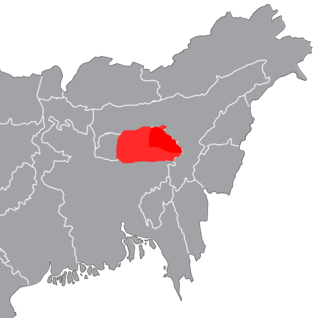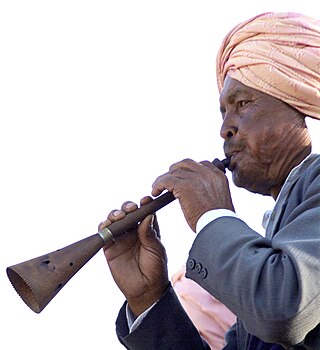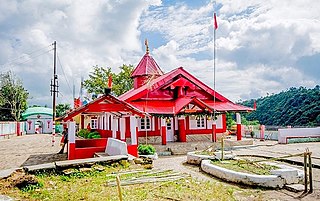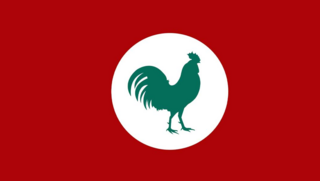
Meghalaya is a state in northeast India. Meghalaya was formed on 21 January 1972 by carving out two districts from the state of Assam: (a) the United Khasi Hills and Jaintia Hills and (b) the Garo Hills. The population of Meghalaya as of 2014 is estimated to be 3,211,474. Meghalaya covers an area of approximately 22,429 square kilometres, with a length-to-breadth ratio of about 3:1.

Khasi is an Austroasiatic language with just over a million speakers in north-east India, primarily the Khasi people in the state of Meghalaya. It has associate official status in some districts of this state. The closest relatives of Khasi are the other languages in the Khasic group of the Shillong Plateau; these include Pnar, Lyngngam and War.

Shillong is a hill station and the capital of Meghalaya, a state in northeastern India. It is the headquarters of the East Khasi Hills district. Shillong is the 330th most populous city in India with a population of 143,229 according to the 2011 census. It is said that the rolling hills around the town reminded the British of Scotland. Hence, they would also refer to it as the "Scotland of the East".

The Khasi people are an ethnic group of Meghalaya in north-eastern India with a significant population in the bordering state of Assam, and in certain parts of Bangladesh. Khasi people form the majority of the population of the eastern part of Meghalaya, that is Khasi Hills, constituting 78.3% of the region's population, and is the state's largest community, with around 48% of the population of Meghalaya. They are among the few Austroasiatic-speaking peoples in South Asia. The Khasi tribe holds the distinction of being one of the few remaining matriarchal tribes of the world. Under the Constitution of India, the Khasis have been granted the status of Scheduled Tribe.

The Garo people are a Tibeto-Burmese ethnic group who live mostly in the Northeast Indian state of Meghalaya with relatively few people in neighboring Bangladesh. Historically, the name Garo was used for a large number of different peoples living on the southern bank of Brahmaputra river, but now refers primarily to those who call themselves A•chik Mande or simply A•chik or Mande and the name "Garo" is now being used by outsiders as an exonym. They are the second-largest tribe in Meghalaya after the Khasi and comprise about a third of the local population.

Cherrapunji or Sohra is a sub-divisional town East Khasi Hills district in the Indian state of Meghalaya. It was the traditional capital of ka hima Sohra.

The Khasi Hills are a low mountain formation on the Shillong Plateau in the Meghalaya state of India. The Khasi Hills are part of the Garo-Khasi-Jaintia range and connect with the Purvanchal Range and larger Patkai Range further east. The Khasi Hills, and the whole Garo-Khasi-Jaintia range, are in the Meghalaya subtropical forests ecoregion.
The Pnar, also known as Jaiñtia, are a sub-tribal group of the Khasi people in Meghalaya, India. The Pnar people are matrilineal. They speak the Pnar Language, which belongs to the Austro-Asiatic language family and is very similar to the Khasi language. The Pnar people are natives of West Jaintia Hills and East Jaintia Hills District of Meghalaya, India. They call themselves as "Ki Khun Hynñiew Trep". Their main festivals are Behdeinkhlam, Chad Sukra, Chad Pastieh and Laho Dance.
Skendrowell Syiemlieh was a Khasi folk and Gospel singer. He was a master musician and an accomplished artist of the folk instrument known as the duitara. He was also the playback singer for the Khasi film U Manik Raitong.

The Khasi and Jaintia Hills are a mountainous region that was mainly part of Assam and Meghalaya. This area is now part of the present Indian constitutive state of Meghalaya, which includes the present districts of East Jaintia Hills district, headquarter Khliehriat, West Jaintia Hills district, headquarter Jowai, East Khasi Hills district, headquarter Shillong, and West Khasi Hills district, headquarter Nongstoin.
There are many instruments which can be or are commonly referred to as four string guitars.

The tangmuri, ka tangmuri in the Khasi language, is a double-reed conical-bore wind-instrument used by the Hynniew Trep people of Meghalaya State in North-East India.
Evansius Kek Mawlong was an Indian politician who served as the Chief Minister of Meghalaya from 8 March 2000, until 8 December 2001. He was the main architect in the formation of the United Democratic Party in Meghalaya and was its Founding President.
Evangelization of Meghalaya began in the 19th century during the British era. In the 1830s, American Baptist Foreign Missionary Society had become active in Northeast to evangelize indigenous tribes to Christianity. Later, they were offered to expand and reach into Sohra Meghalaya, but they lacked the resources to do so and declined. Welsh Presbyterian Mission took the offer and they began work at Sohra mission field. By the early 1900s, other Protestant denominations of Christianity were active in Meghalaya. The outbreak of World Wars forced the preachers to return home to Europe and America. It is during this period that Catholicism took root in Meghalaya and neighbouring region. Currently, Catholics, Presbyterians and Baptists are three most common Christian denominations found in Meghalaya.

Neil Nongkynrih was an Indian concert pianist and conductor. He founded the Shillong Chamber Choir (SCC), which won the reality show India's Got Talent in 2010. He was awarded Padma Shri, the fourth highest civilian award of India in 2015.
Hamlet Bareh Ngapkynta (1931-2012) was an Indian writer, historian and film director from the Northeast Indian state of Meghalaya. He is known as the first person from the Khasi tribe, an indigenous ethic group of the state, to secure a doctoral degree (PhD) and as the maker of the first feature film in Khasi language, Ka Synjuk Ri ki Laiphew Syiem. He was the chairman of the executive committee of the Rajiv Gandhi University, Arunachal Pradesh and a recipient of the 2004 Meghalaya Day Award. The Government of India awarded him the fourth highest civilian honour of the Padma Shri in 2004,

Multiple tribes in the state of Meghalaya in northeast India practise matrilineal descent. Often referred to as Khasi people and Garo people, among the Khasi people which is a term used as a blanket term for various subgroups in Meghalaya who have distinguishing languages, rites, ceremonies, and habits, but share an ethnic identity as Ki Hynniew Trep whereas the Garo people refers to the various groups of Achik people. The Khasi, Garo, and other subgroups have a proud heritage, including matrilineality, although it was reported in 2004 that they were losing some of their matrilineal traits. The tribes are said to belong to one of the "largest surviving matrilineal culture[s]" in the world.
Khasi Cinema is the term used to refer to the Khasi language film industry based in Shillong in Meghalaya, India. In 1981, Hamlet Bareh Ngapkynta's 1981 film Ka Synjuk Ri ki Laiphew Syiem became the first ever film in Khasi. Years later, Ardhendu Bhattacharya's 1984 film Manik Raitong became the first ever color film in the Khasi language. After the 2000s when militancy in the state came down drastically, a market for entertainment and movies opened up. Many short films and telefilms began being produced in the Khasi language. The production of feature films in Khasi got a major fillip after the entry of national award winning filmmakers like Pradip Kurbah into the scene.

Hinduism is a minority religion in the Meghalaya state of India constituting 12% of the state's population. The Nartiang Durga Temple in Meghalaya is one of the 51 Shakti peethas on Earth and is considered by Hindus of Meghalaya as the permanent abode of Goddess Durga. Hinduism is a popular religion practice by Rabhas, Hajongs, Kochs, Rajbongshis, Mikirs, Bengalis, Nepalis, Biharis etc.

The Seng Khasi movement began in Mawkhar, Shillong on Nov 23rd 1899. The Seng Khasi is a socio cultural organisation formed to protect and preserve the Khasi culture and religion - Niam Khasi - from the forces of change brought by the British. It was founded by 16 young Khasi men under the guidance and mentorship of U Babu Jeebon Roy, an educationist, entrepreneur and advocate of indigenous beliefs and culture of the time. The sixteen founders were concerned about the loss of traditional Khasi culture and values due to the influence of British colonial rule and Christian missionaries.












